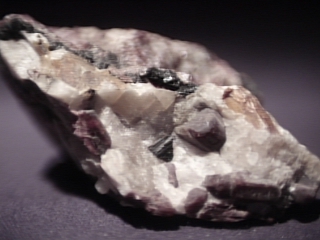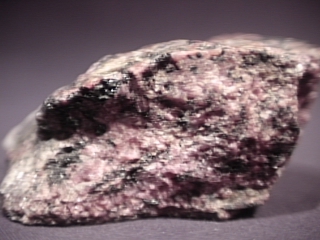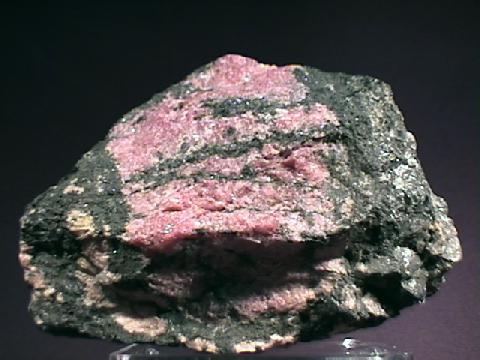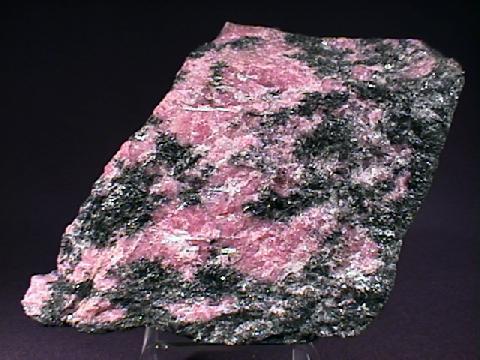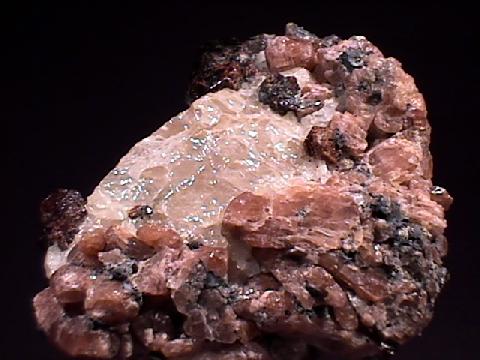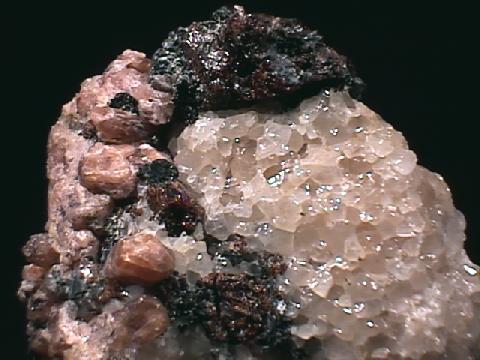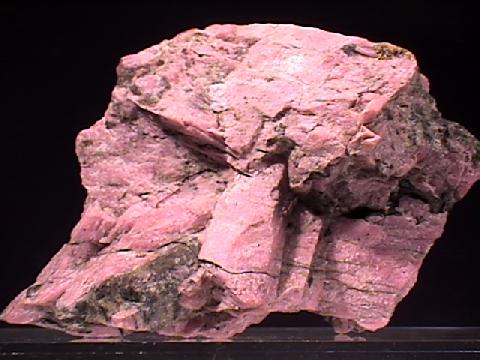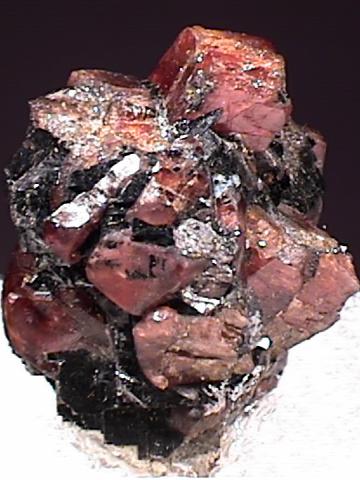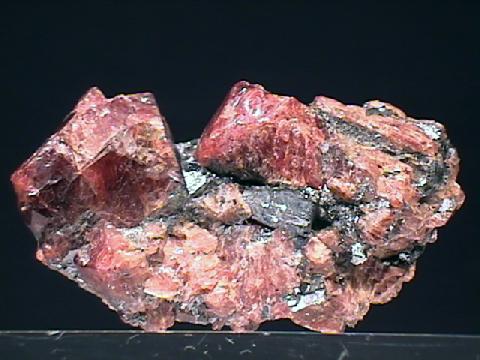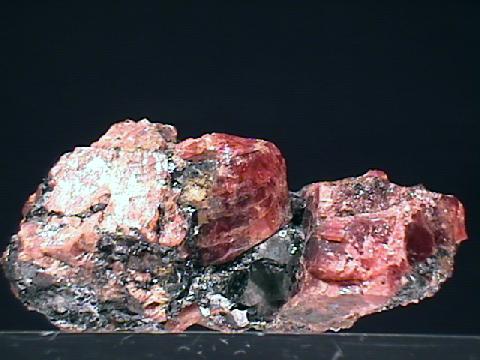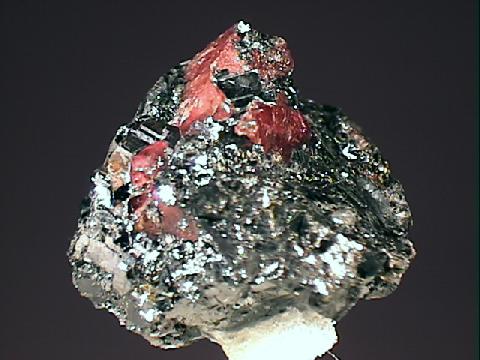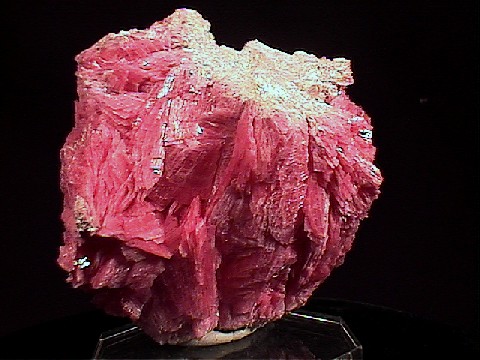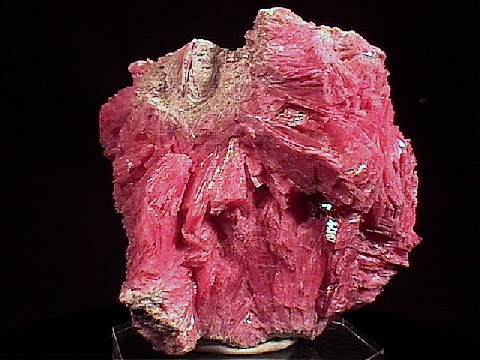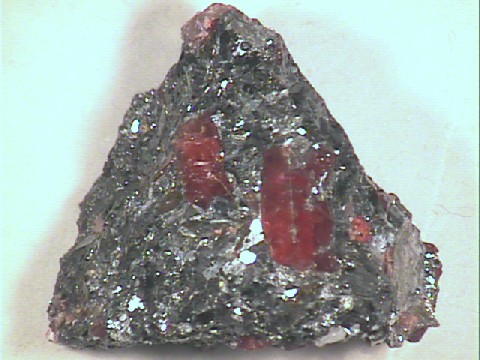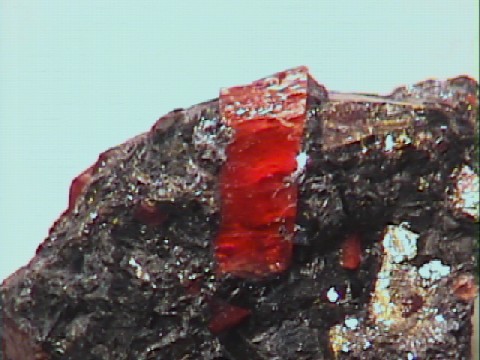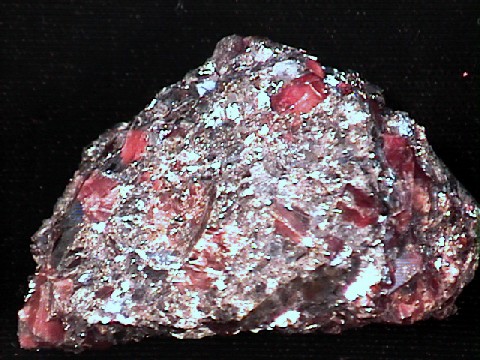 THE MINERAL RHODONITE
THE MINERAL RHODONITE
- Chemistry: (Mn, Fe, Mg, Ca)5(SiO3)5 ,
Manganese Iron Magnesium Calcium Silicate.
- Class: Silicates
- Subclass: Inosilicates
- Group: Pyroxenoid
- Uses: ornamental and semi-precious stone and as a minor ore of manganese
- Specimens
Rhodonite is an attractive mineral that is often carved and used in jewelry.
It is named after the Greek word for rose,
rhodon.
Its rose-pink color is distinctive and can only be confused with
rhodochrosite and the rare mineral,
pyroxmangite, MnSiO
3.
Rhodochrosite however is streaked with white minerals such as calcite and is reactive to acids.
While rhodonite does not react to acids and is usually associated with black manganese minerals and pyrite.
Pyroxmangite is a little harder to distinguish because the two minerals are closely related and x-ray studies are usually needed when found massive.
Crystals of pyroxmangite are often twinned as is not the case with rhodochrosite crystals.
Crystals of rhodonite, while not in nearly the same abundance as massive rhodonite, are still found and distributed on the mineral markets.
They come from a few notable localities and are considered classics by collectors.
PHYSICAL CHARACTERISTICS:
- Color is typically pink to red or orange and even black.
- Luster is vitreous to dull to pearly on polished surfaces.
- Transparency: Crystals are generally translucent and rarely transparent.
- Crystal System is triclinic; bar 1
- Crystal Habits include crystals that have a blocky prismatic habit, however crystals are rare.
More typically massive, coarse and fine granular aggregates.
- Cleavage is perfect in two directions forming prisms with a rectangular cross-section.
- Fracture is conchoidal.
- Hardness is 5.5 - 6.5.
- Specific Gravity is approximately 3.4 - 3.7+ (above average for translucent minerals)
- Streak is white.
- Associated Minerals are calcite,
pyrite,
microcline,
spessartine,
pyroxmangite
and other manganese minerals.
- Other Characteristics: May tarnish to a brown or black color upon exposure.
- Notable Occurrences include Ural Mountains, Russia; Broken Hill, Australia; Langban, Sweden, Menas Gerais, Brazil and Massachusetts and Franklin, New Jersey, USA.
- Best Field Indicators are color, black inclusions, lack of reaction to acid and hardness.
 THE MINERAL RHODONITE
THE MINERAL RHODONITE
